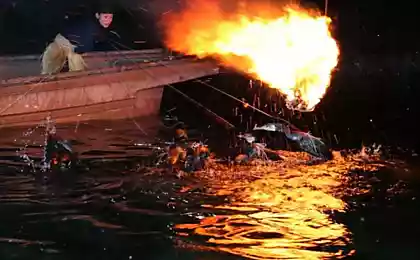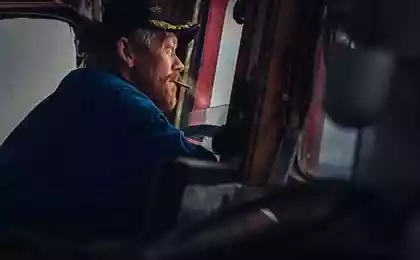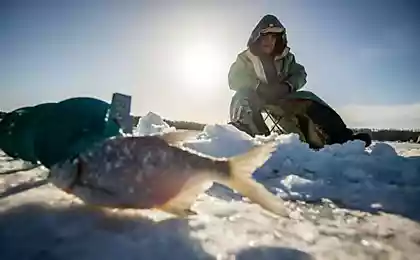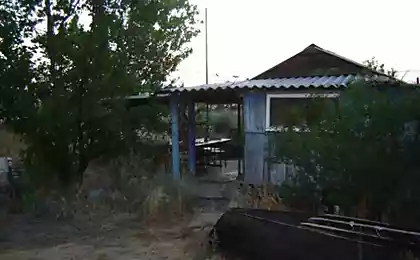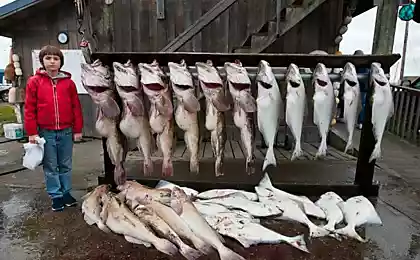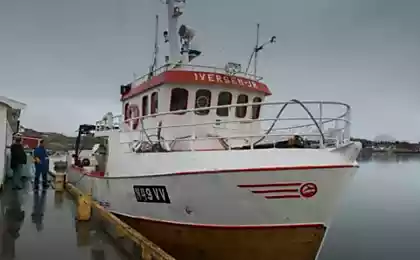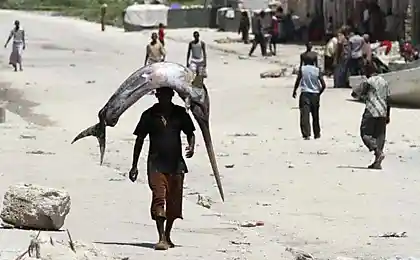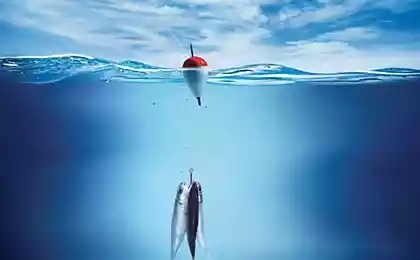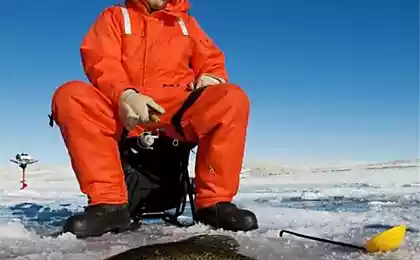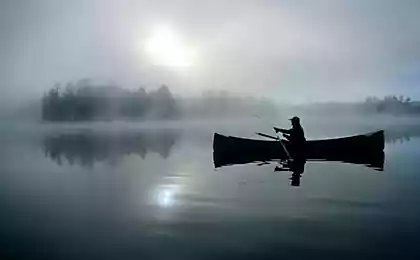691
Fishing with tame cormorants
Fishing using the bird it was known in England for a long time. At the court of Charles I (1625-1649) there was even a position of "Master of the royal cormorants" occupied by Mr. Wood, who was driving a flock of cormorants hunting in the falconry. Birds prepared as hawks, and taught them to "keep on hand." This service is completely lost, and entertainment during the civil war, which resulted in the courtyard of the monarch had been destroyed. In France, too, knew about this method of fishing. Preserved interesting record dating back to the reign of Henry IV, from the diary of Gerard, who was a doctor in the future French King Louis XIII: «September 24 1609 the Dauphin along with their Majesties will look like in the hunt Cormorant channels a large garden of Fontainebleau." At the beginning of the reign of Louis XIII, as is well known, passionate hunter, was called to the court of Fleming, who, according to records of the time, was fishing in the waters of the palace of Fontainebleau using cormorants.
9 ph via bbs.163.com text via gusevhunting

The origins of this hunt are located far to the east - to China. We can assume that the Europeans acquainted with this way of fishing was due to the descriptions of the first Jesuit missionaries who visited this country. From the time of Discovery in China have been increasingly penetrating the Europeans. A lot of different things, porcelain and silk, household items were exported from this country. Some of them, notably, were depicted scenes showing the work of cormorants.
Many of those who visited China after the first war with the country of England (1839-1842), noted the use cormorants to fish production. Mr. Forchyun, who visited China in 1842, saw her near the mouth of the river-Fu Zhou Fu. He wrote: "This fishing, known here (in China) since time immemorial, it is usually carried out on the boat with the assistance of 3-4 people. In front of the bow is the master of a dozen trained birds. In the middle of the boat is another angler, but only six cormorants. Usually between the two fishermen sitting third, armed with long bamboo stick. Duty him - beat it on the water and birds that excite the greed and the desire to catch. Rower, that is the fourth man operates the boat from the stern. Birds sitting on the side of the boat and on the orders of the owner dive for fish caught bringing in the boat. It is remarkable that, despite the fact that often in one place is going to a lot of junks, bird never wrong boat and do not sit on someone else. The birds descend on ropes tied with the rings, which are sufficiently strong tightening the neck cormorants. Greedy cormorants to fish seize prey, but can not swallow. The fish is taken by hunters. Each of cormorants has its own number, which serves him instead of nicknames. They know their numbers, usually given by seniority years, and each cormorant, he heard his call out immediately thrown into the water. "
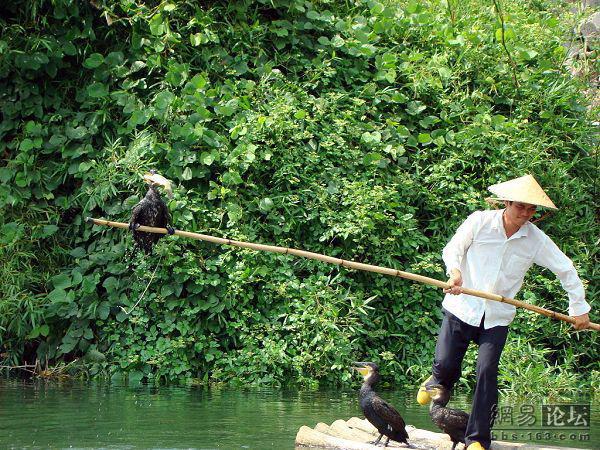
In some places hunting and fishing carried out at night, but in artificial light. Maybe it's due to the nocturnal activity of any fish species of interest to the industrialist, as extracted fish both freshwater lake and near the sea shore. Light is needed, perhaps, not only for people but also for the birds, too, and even more so, because the Cormorant hunts by sight. Fire bred in iron baskets attached to high poles.
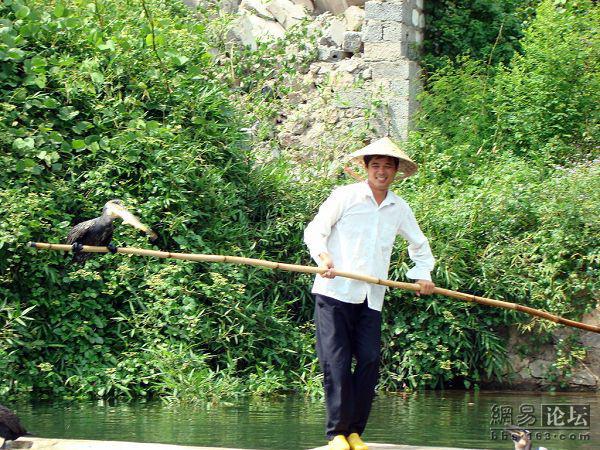
In Europe in the XIX century interest in hunting fish with cormorants has increased markedly. At this time, the Netherlands became the center for the training of hunting cormorants. Here, for 12 years, since 1841, there falconers society Loo Hawking Club, in which were kept and trained cormorants. Hence they are often supplied by some fans in some counties of England and the provinces of France.
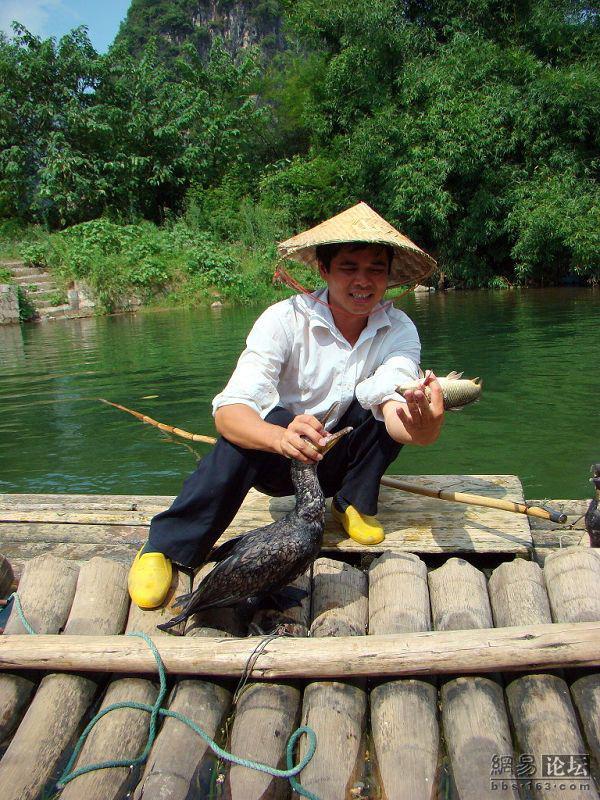
In France, the resurgence of interest in catching cormorants connected with the Lord Kut and Pierre de Kantele Pesho. In 1865 they brought from England one John Bara to organize falconry, is almost extinct in the country. Being in the service of Mr. Grandmaison, he behaved to his fishing cormorants. Within three years, the English with the French falconers hunt staged remarkable. Count de Kut met with the help of John's Bar and with the handling of cormorants hunting, fishing which are essentially the same as with the birds of prey, but was hunted fish. Without limiting their ability and effort to introduce this passion everybody, Earl has published an excellent book on the subject. Among the fishing was so enthusiastic and well-known in France, the forest inspector de la Rue.
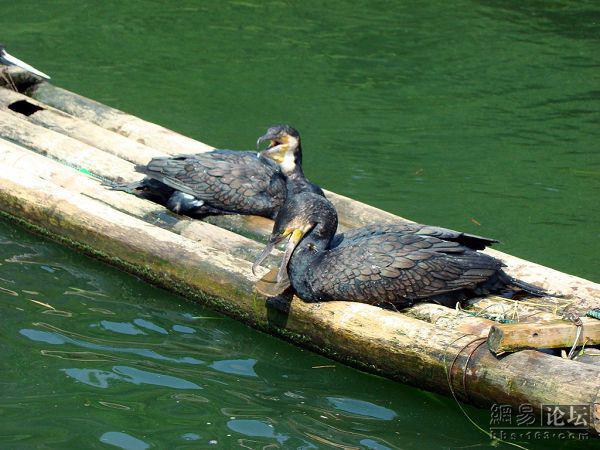
Another well-known falconer Belvalet Alfred had his hunting pack of trained cormorants and even the World Hunting Exhibition, held in Paris in 1900, presented photos of fishing with cormorants in all stages of its implementation.
If China when hunting with cormorants dobychlivost valued above all, the Europeans have been honored in the process of hunting, in which the main place was given to the behavior of the birds.
Cormorants catch practically all freshwater fish from Galliano to pike and sea water with them are often caught flounder. Pure water is the most pleasing to the audience, then they can see every movement of poultry and fish, but for birds, as already mentioned, it is not necessary. Some fishermen told about the hunt in the dark waters of peat. These hunts were no less successful.
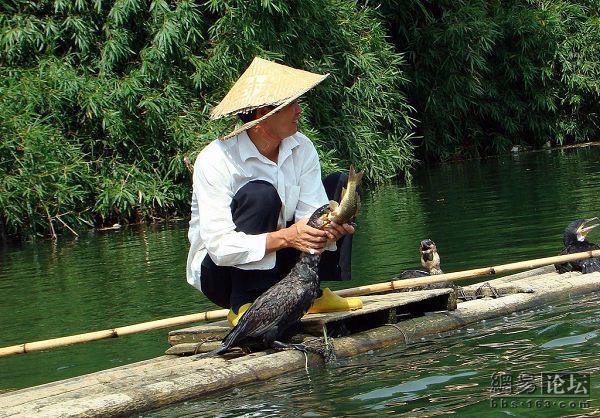
In conclusion, I would like to bring some interesting data fishings with cormorants found in old English editions. In the summer of 1848 for a two-day fishing hunter, who visited northern county at the invitation of the local fishing club Kinsley, with four cormorants in the creek and river Arncliffe Uelf caught 45 large trout weighing a total of about 10 kg. The following year, hunting for 28 days in the same structure, but on the other river, the fish caught in 1200 good size.
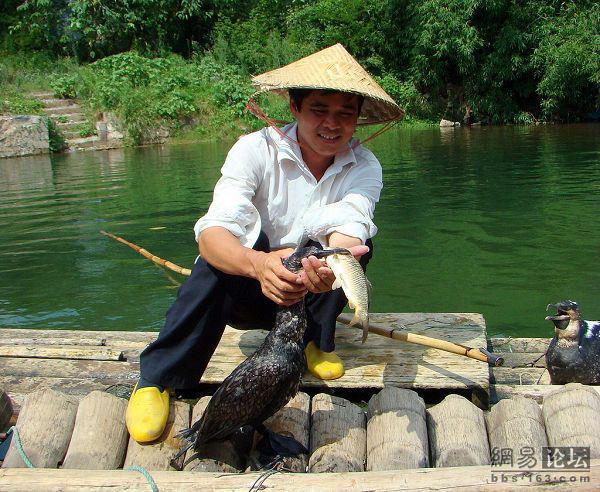
As you can see this type of fishing is used in China today.
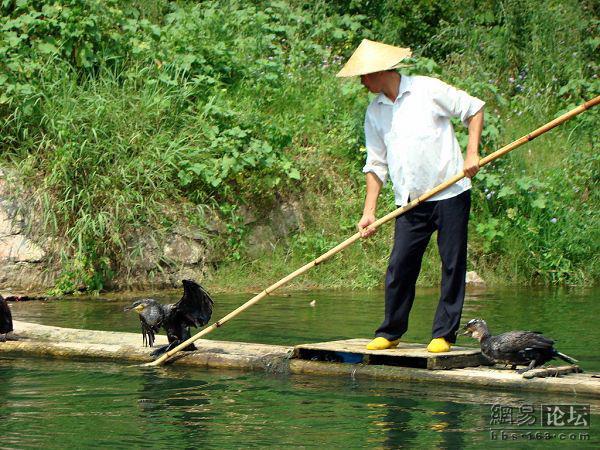
09
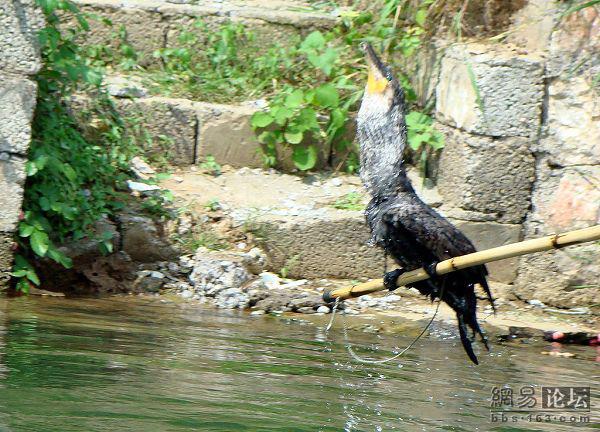
Source:
9 ph via bbs.163.com text via gusevhunting

The origins of this hunt are located far to the east - to China. We can assume that the Europeans acquainted with this way of fishing was due to the descriptions of the first Jesuit missionaries who visited this country. From the time of Discovery in China have been increasingly penetrating the Europeans. A lot of different things, porcelain and silk, household items were exported from this country. Some of them, notably, were depicted scenes showing the work of cormorants.
Many of those who visited China after the first war with the country of England (1839-1842), noted the use cormorants to fish production. Mr. Forchyun, who visited China in 1842, saw her near the mouth of the river-Fu Zhou Fu. He wrote: "This fishing, known here (in China) since time immemorial, it is usually carried out on the boat with the assistance of 3-4 people. In front of the bow is the master of a dozen trained birds. In the middle of the boat is another angler, but only six cormorants. Usually between the two fishermen sitting third, armed with long bamboo stick. Duty him - beat it on the water and birds that excite the greed and the desire to catch. Rower, that is the fourth man operates the boat from the stern. Birds sitting on the side of the boat and on the orders of the owner dive for fish caught bringing in the boat. It is remarkable that, despite the fact that often in one place is going to a lot of junks, bird never wrong boat and do not sit on someone else. The birds descend on ropes tied with the rings, which are sufficiently strong tightening the neck cormorants. Greedy cormorants to fish seize prey, but can not swallow. The fish is taken by hunters. Each of cormorants has its own number, which serves him instead of nicknames. They know their numbers, usually given by seniority years, and each cormorant, he heard his call out immediately thrown into the water. "

In some places hunting and fishing carried out at night, but in artificial light. Maybe it's due to the nocturnal activity of any fish species of interest to the industrialist, as extracted fish both freshwater lake and near the sea shore. Light is needed, perhaps, not only for people but also for the birds, too, and even more so, because the Cormorant hunts by sight. Fire bred in iron baskets attached to high poles.

In Europe in the XIX century interest in hunting fish with cormorants has increased markedly. At this time, the Netherlands became the center for the training of hunting cormorants. Here, for 12 years, since 1841, there falconers society Loo Hawking Club, in which were kept and trained cormorants. Hence they are often supplied by some fans in some counties of England and the provinces of France.

In France, the resurgence of interest in catching cormorants connected with the Lord Kut and Pierre de Kantele Pesho. In 1865 they brought from England one John Bara to organize falconry, is almost extinct in the country. Being in the service of Mr. Grandmaison, he behaved to his fishing cormorants. Within three years, the English with the French falconers hunt staged remarkable. Count de Kut met with the help of John's Bar and with the handling of cormorants hunting, fishing which are essentially the same as with the birds of prey, but was hunted fish. Without limiting their ability and effort to introduce this passion everybody, Earl has published an excellent book on the subject. Among the fishing was so enthusiastic and well-known in France, the forest inspector de la Rue.

Another well-known falconer Belvalet Alfred had his hunting pack of trained cormorants and even the World Hunting Exhibition, held in Paris in 1900, presented photos of fishing with cormorants in all stages of its implementation.
If China when hunting with cormorants dobychlivost valued above all, the Europeans have been honored in the process of hunting, in which the main place was given to the behavior of the birds.
Cormorants catch practically all freshwater fish from Galliano to pike and sea water with them are often caught flounder. Pure water is the most pleasing to the audience, then they can see every movement of poultry and fish, but for birds, as already mentioned, it is not necessary. Some fishermen told about the hunt in the dark waters of peat. These hunts were no less successful.

In conclusion, I would like to bring some interesting data fishings with cormorants found in old English editions. In the summer of 1848 for a two-day fishing hunter, who visited northern county at the invitation of the local fishing club Kinsley, with four cormorants in the creek and river Arncliffe Uelf caught 45 large trout weighing a total of about 10 kg. The following year, hunting for 28 days in the same structure, but on the other river, the fish caught in 1200 good size.

As you can see this type of fishing is used in China today.

09

Source:
